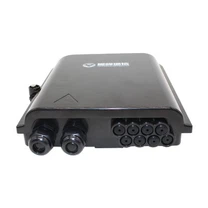
To test whether a fiber optic patch cord is qualified, you can perform several tests to ensure its performance and quality. Here are some common tests that can be conducted:
1.Visual Inspection: Begin by visually inspecting the patch cord for any physical damage, such as scratches, cracks, or bent connectors. Make sure the connectors are clean and free from dust or debris.
2.Connector Endface Inspection: Use a fiber optic microscope or inspection scope to examine the connector endfaces. Inspect for any dirt, scratches, chips, or defects on the endface. The endface should be clean and smooth, without any visible damage.
3.Insertion Loss Test: Measure the insertion loss of the patch cord using an optical power meter and a light source. Connect one end of the patch cord to the light source and the other end to the power meter. The insertion loss should be within the specified limits for the particular type of patch cord.
4.Return Loss Test: Measure the return loss of the patch cord using an optical time-domain reflectometer (OTDR) or a return loss meter. The return loss indicates the amount of light reflected back towards the source. It should be within the acceptable range for the patch cord.
5.Continuity Test: Verify the continuity of the fiber optic link by performing a continuity test. Use a fiber optic continuity tester or an optical fiber tracer to check if there is a continuous optical signal transmission through the patch cord.
6.Cable Tensile Strength Test: Apply a specific amount of tension to the patch cord to test its tensile strength. The patch cord should be able to withstand the specified tension without any damage or breakage.
7.Environmental Test: Subject the patch cord to environmental conditions such as temperature and humidity extremes to ensure it can withstand the expected operating conditions.






